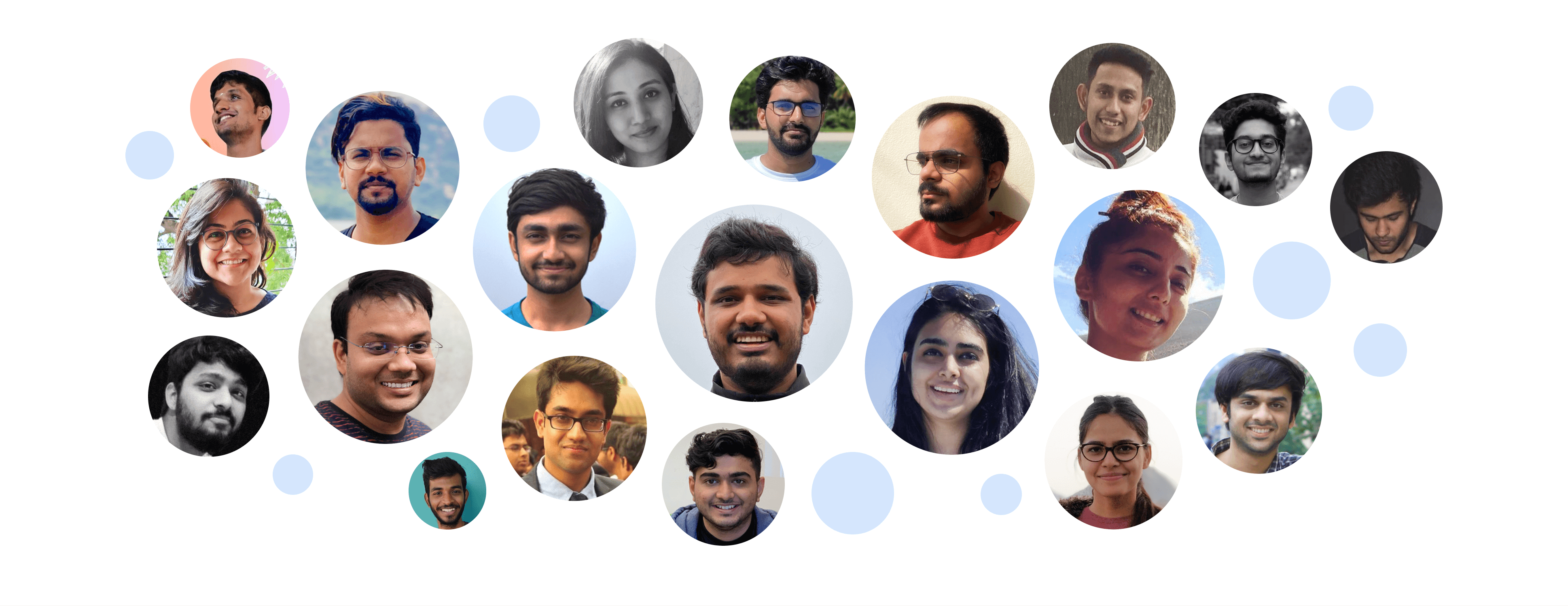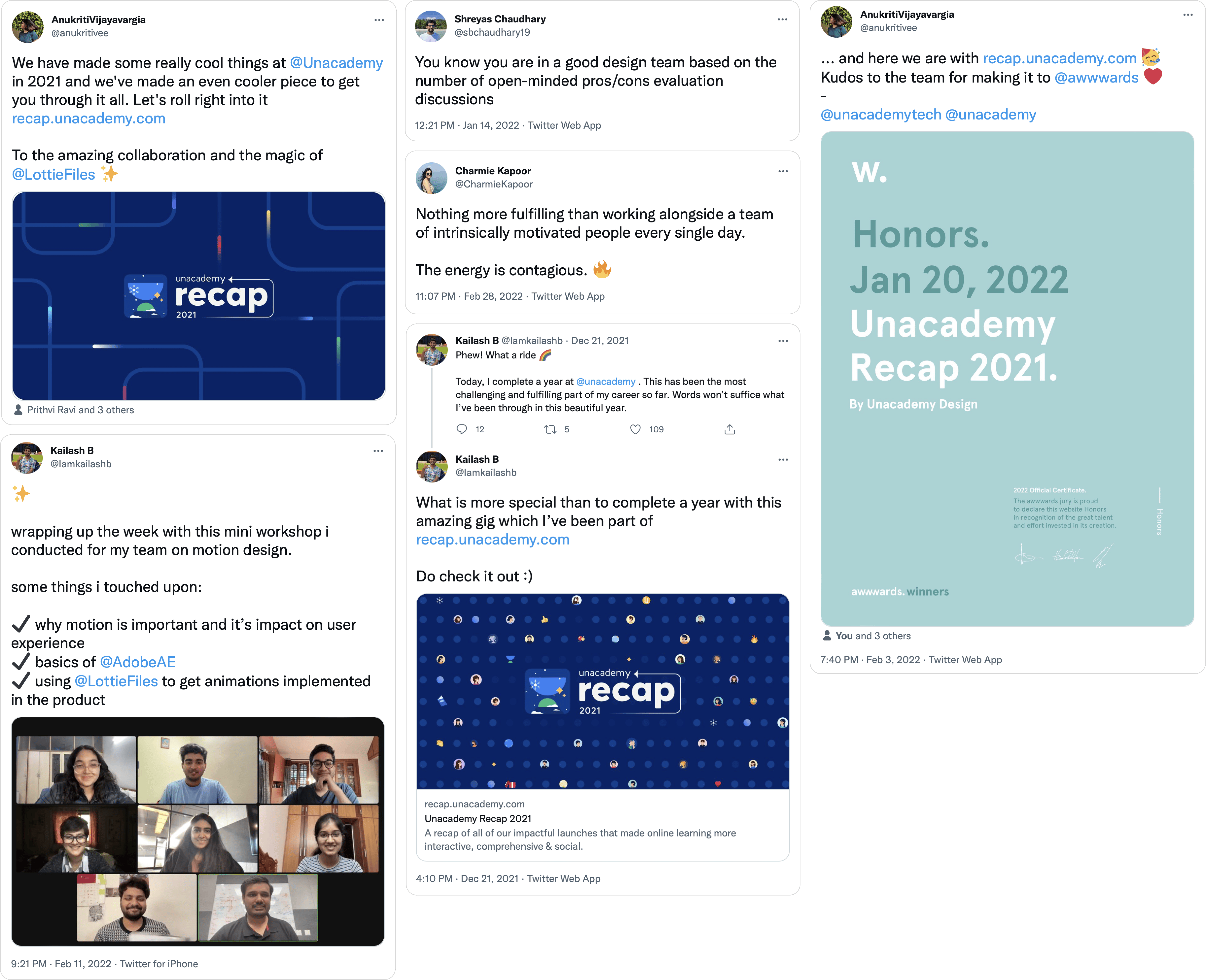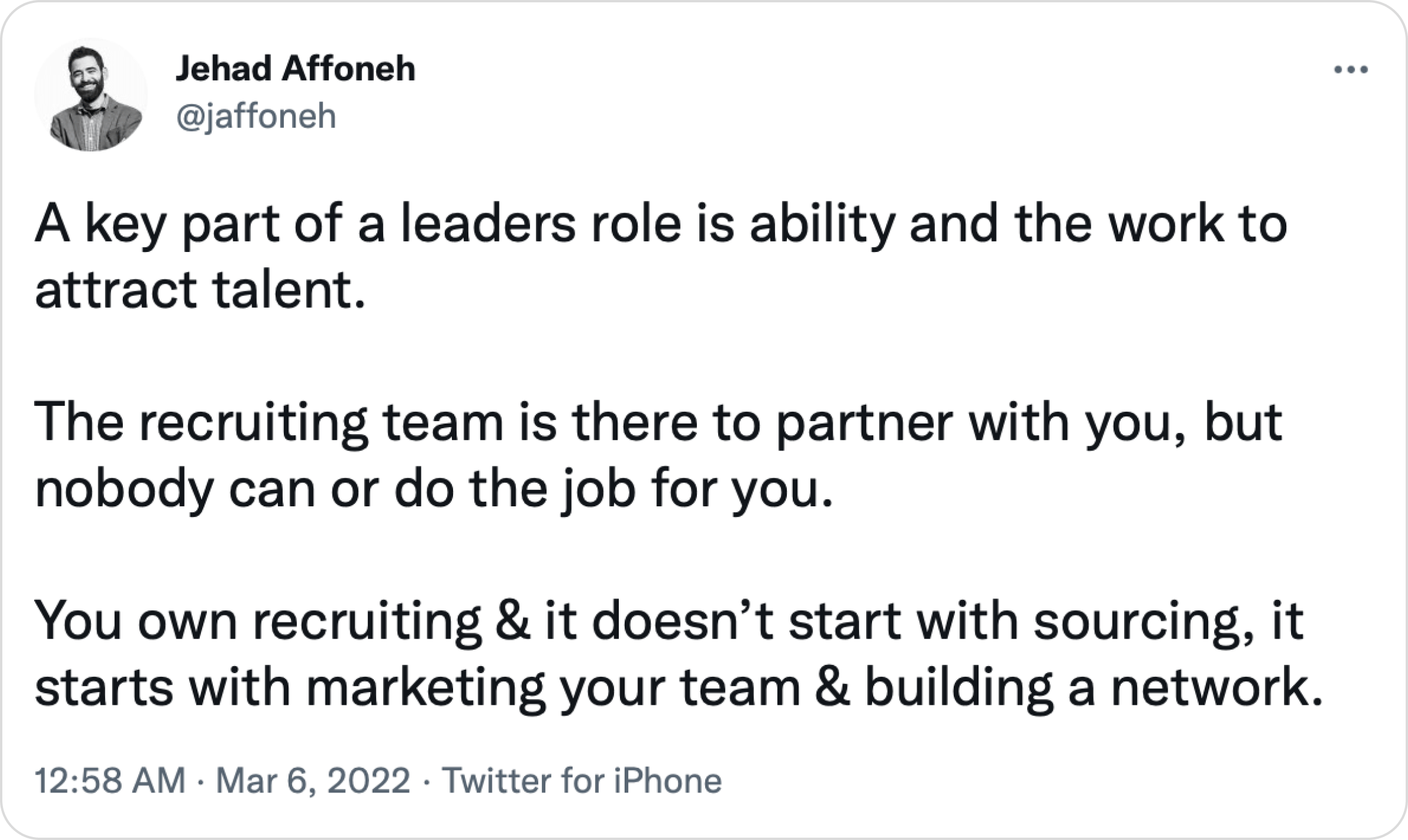How We Built Our Design Team
Note: All the work I showcase here has been done by our team and we share collective credit for it. We’re proud of all the work we do together.

I inherited a very mature but a small design team when I joined Unacademy in 2020. We had about 9 members with a diverse set of skills. As I look back the most important thing I’m happy I did very early on was to set up in-depth 1:1s with each member. I wanted to understand individual skills and motivation levels. I even asked for the most recent files they’d worked on – if you’ve not done this, I highly recommend - reveals quite a lot.
Getting to know that initial team made me realize we were far off from where we needed to be – both in quality and quantity. We wanted to strengthen specific areas. This is when the team-building began.
I’ll frame it as advice but this is just a collection of things that worked well for us.
🔬 Audit your current team
Understand the folks you inherit. You want to find out the players who are in it for the long-term. Because of the history, you’d likely have some disgruntled folks. Understand their concerns and see if they’d love to continue and give the company another shot under new leadership.
Here’s what I recommend:
- Set up 1:1s with each member: Discuss what keeps them here, what concerns they have and what they want to see improved
- Assess each member’s recent work
- Start calibrating (I’ve written more on that here)
- Prepare for tough conversations if there are members that don’t fit in your plans
At the end of this step, you should have your base of solid designers that you’d start building your team on.
This part isn’t relevant if you’re building your team from scratch.
🎯 Define the kind of work you want to do
You cannot build a solid team without strong understanding of what you want to do with it. I remember having long and detailed discussions with our founders about what we wanted our product & design to stand for.
A few tenets became very clear:
- Details matter – we want all our designers to care about and take ownership of the details
- Visual design matters – we won’t ship things that aren’t tight
- Strong first-principle thinking & intellectual honesty is important
- We don’t ship it until it feels right
Mind you, these aren’t just things we say for the sake of it. Our team members can vouch for how dearly we internalise each of these in everything we do.
Along with those, we also established the culture code in detail.
This made our internal benchmarking clear and objective about the kind of people that we’d like to bring into our team.
✨ Do great work, share that work
This is the most important step. You can write pages about the principles, culture tenets and ideals but none of that will ever bring you or your team the attention that doing real work would.
We rightfully wanted our work to be our identity.
We have a pretty complex product on our hands – building an experience to serve a variety of needs for learners preparing for complex competitive exams means we’ve amassed a very long list of very impactful launches over the last couple of years. But that’s already in the product and in our user’s hands.
To share the work we do, we took a bit of a creative approach:
- Build stellar landing pages that tell a story
- Create a video narrative to demo the work
- Publish in-depth case studies outlining the behind-the-scenes of the work that went in
Doing this has been game-changing. Putting out a best-in-class learning app and sharing our work openly has got us more inbound interest from talented designers than any other thing we did.
Great work attracts great designers.

🤝 Be creative with your hiring
Look, there’s a lot broken with hiring in general. And even more so in design hiring. But it’s not like there’s no room to innovate here.
- Hiring Leads – Look into your own network: Start reaching out to the experienced folks in your network. I’d extensively prepared notes on their individual charters, the depth & breadth of the work they would do and their personal growth path. Your Leads create the foundation on which you’d build your team. Getting the right ones is vital.
- Hiring Seniors – Lend your own time and get talking: I had opened up time on my calendar to let anyone book a slot to discuss a career with us. Some of these 15-min discussions lead to deeper interest and we added a few more senior designers.
- Hiring Fresh folks – Be exciting, interesting and fun: I have to hand all the credit here to our Debut program and all our folks who made it a success. Literally every feedback we received on it mentioned about how the candidates truly enjoyed just attempting it. Being fun and interesting helps a lot.
In terms of being creative, my only tip is to try everything you can think of to get your first 5 hires. They’ll help you get the next 10 and so on.
Things fall into place very very slowly at first… and then all at once.
🏆 Build proud and vocal culture champions
Empower and help your team to do great work. And then let them own the work. We actively encourage every member of the team to talk about the work they do and present it externally in the best shape and form possible.
We strongly advocate building a personal brand on the back of proof of work. Every member of our team ships high-quality stuff and is empowered to share it far and wide.

At the end I’ll say this: All said and done, as the Leader it’s your job to build and nurture a great team. Everyone else including your talent acquisition team, the head of recruiting and the rest are there to help. But the work starts and ends with you.

Building a team and contributing to building an organization is serious business. I’ve tried to share our learnings and what worked very well for us but know that we’re not perfect. We’ve made mistakes and have documented our learnings. I’d be happy to have a chat and discuss this further if you’d like.